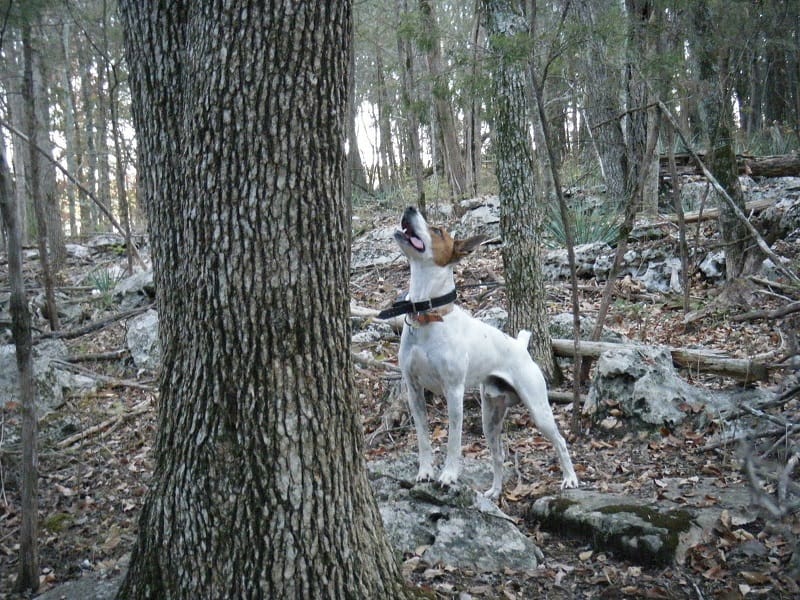

As feists are bred for hunting, not as show dogs, little to no consistency is seen in appearance (breed type), and they may be purebred, crossbred, or mixed-breed dogs.

The tail can be natural, bobtail, or docked. The ears are set high on the head and are button, erect, or short hang.

Of course, like any terrier you’re going to run into a personality that is more pronounced, and more territorial than you’d find with a Lab, Golden, or other non-terrier breed.

So, you do get some down-time with this pooch. While he’s highly energetic and needs regular daily walks, he also loves to nest with his human pack and enjoys nothing more than a snuggle on the sofa after a long and busy day. He’s smart which makes training quick and teaching him special commands, or tricks, easy. In spite of his dubious history, and prowess for the hunt, this spunky little dog makes a great companion animal. And as the name implies, he was used for tracking and “treeing” small prey such as squirrels and rodents, while he waited for the hunter to arrive. While he isn’t recognized by the American Kennel Club (AKC), the “Treeing” variation of the Feist is acknowledged by Britain’s United Kennel Club (UKC) as an identifiable breed. If you were trying to envision a similar breed with a recognizable name, you could look to a Rat Terrier, Jack Russell Terrier or Parson Russell Terrier. He’ll also have a short, smooth, bi-color coat, erect ears, and long, upright tail. Typically, he will be smaller, weighing just 15 to 30 pounds, and stand between 12- and 16-inches in height. Now, in spite of his vague ancestry, there is an overall “look” you can expect with a Feist dog. The end result is a compact little hunting dog that is sturdy, muscular, and with a rather spirited personality. The general consensus is that he’s a combo terrier (likely brought to North America by the Brits around the 1700s) and Native American Dog. And while the jury’s out on where the unusual name came from – Abraham Lincoln called him a “Fice” when writing about this small hunting pooch, and other iterations have included Fyce and Foist – his lineage is equally intriguing. Nope, we’re not talking about a high-spirited, “feisty” pooch… we’re talking about an actual type of dog known as a Feist.
FEIST DOG BREED SHEDDING HOW TO
Have you ever heard of a Feist dog? Let’s talk about what makes this breed so special and how to identify one.


 0 kommentar(er)
0 kommentar(er)
